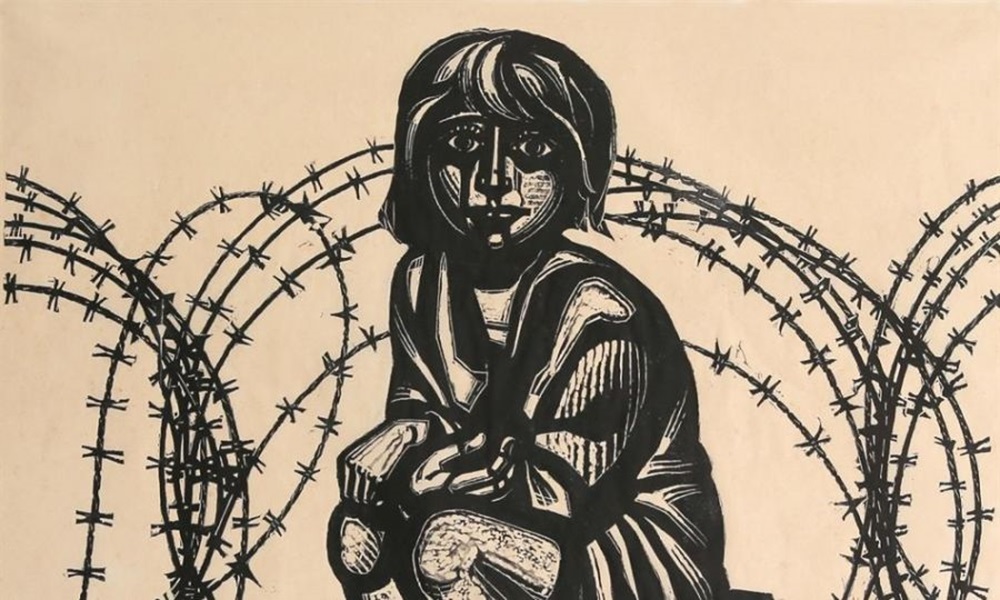
The well-known refugee child, a woodcut by the renowned and one of the most important Greek engravers A. Tassos, entitled “Cyprus 1974“, now adorns the Senate conference room of the University of Cyprus.
The emblematic work, which instantly became a symbol of the tragedy of 1974 and the modern history of Cyprus, was identified by the Art Collection Management Committee of the University of Cyprus and was acquired by exceptional purchase. The work was presented by Ms Elena Parpa, Curator of Exhibitions, before members of the Senate and the University of Cyprus Art Collection Management Committee on Wednesday 7 February, prior to the start of the regular session.
The Refugee Stamp was introduced in September 1974 to support the Refugee Fund and raise awareness in the international community. The original woodblock was printed in ten copies after the invasion of Cyprus and one of the original woodblocks is now in the Presidential Palace. The child with the wire mesh, which was a stamp image of the Cypriot postage stamp called “Refugee Stamp”, accompanied Cyprus’ correspondence to the whole world and is still to this day affixed to everything mailed by the Cyprus Post Office, thus informing the international community about the unresolved Cyprus problem.
In her presentation, Ms Elena Parpa referred to the appeal to monumentality that characterizes the artist’s work. She discussed the symbolism that emerges from the work, such as the experience of displacement and separation, but also the timelessness that characterizes it to this day, citing the case of the Gaza Strip as an example.
The Rector, Professor Tasos Christofides described the work as a “reminder” of the Turkish invasion, but above all of the duty of every Cypriot to support the reunification of Cyprus. A work, as he said, engraved in the hearts of Cypriots is now at the centre of decisions and free reflection of our academic institution.







Leave A Comment